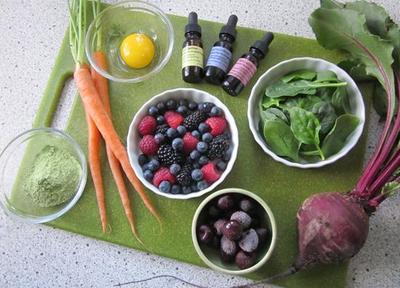 What your words say about who you are and what you believeWritten by Robert T. Kiyosaki My rich dad once said to me, "If I listen to a person's words, I begin to see and feel their soul." Rich dad understood what many successful business people understand, that being able to quickly measure up a person based on things like body language or the words they use is just as important as understanding financial statements and economic reports. One of my rich dad's greatest skills was being able to "read" people, but he also believed you couldn't judge a book by its cover. Like Henry Ford, my rich dad didn't have an excellent education, but both men knew how to hire and work with people who did. Rich dad explained to me at an early age that the ability to bring smart people together and work as a team was one of his primary skills. As a young boy, I sat with my rich dad when he hired people. From those interviews I learned to listen, not so much for just words, but also for core values. From that experience, I learned that, when it comes to the CASHFLOW® Quadrant, people in each quadrant—E for employee, S for self-employed, B for business, and I for investor—had their own way of talking that expressed who they truly were at their core. E-quadrant words A person who comes from the E quadrant might say, "I'm looking for a safe, secure job with good pay and excellent benefits." Words like these tell me that a person's core value is security in the face of fear. People who embrace security as a response to fear like to have things in writing, knowing exactly what they'll make and what their benefits are, such as health insurance provided by the employer. For them, the idea of security is often more important than money. Employees can be presidents of companies...or janitors. It's no so much what they do but the contractual agreement they have that's important to them. S-quadrant words A person who comes from the S quadrant might say, "My rate is $75 per hour." Or, "My normal commission rate is six percent." Or, "I can't seem to find good people to work on this project and get the job done right." Or, "I've got more than twenty hours into this project." Those in the S quadrant like to be their own boss or "do their own thing." When it comes to money, those in the S quadrant don’t like to have their income dependent on other people. If they work hard, they expect to get paid for their work. Conversely, they understand that if they don't work hard, they don't deserve to get paid well. They have fiercely independent souls. B-Quadrant words A person operating out of the B quadrant might say, "I'm looking for a new president to run my company." Those in the B quadrant are almost the opposite of those in the S quadrant. They like to surround themselves with people who can do the job better than they can. Their true motto is, "Why do it yourself when you can hire someone to do it for you, and they can do it better?" Those in the B quadrant like to work on their company and hire smarter people to work in it. I-Quadrant words Someone operating from the I quadrant might say, "Is my cash flow based on an internal rate of return or a net rate of return?" Investors make money with money. They don't have to work because their money is working for them. Because of this, they know how money works. They understand the language of money, and they speak it fluently. What do your words say about you? Have you ever stopped and listened to the words that you use? A good exercise this week would be to slow down and listen to yourself. Find out what you say and how you say it. You may find that at your core, you're someone different than you thought you were. The same holds for those you work with or who work for you. Listen to their words this week as well. In the end, our words are good indicators of what's really important to us. The good news is that once we understand who we are at our core, we can then decide if we like that person or if we want to aspire to be something more. But it all starts with listening. Want to learn about financial education with other like-minded individuals? ➜ Subscribe for free here.
 The next time you’re at a child’s birthday party, notice the beautiful array of cakes, cookies, and cupcakes, all showcasing a rainbow assortment of artificial colors. While they may make these sweets look appetizing to children, these synthetic ingredients often take the place of nutrition in foods. For example, fruit juice that contains colors is typically devoid of any fruit, making it artificially-colored sugar water. Worse than that, many food colors are linked to hyperactivity disorders and cancer.
Artificial coloring is a serious problem in fast food and fake food. A recent petition by the Center for Science in the Public Interest, a consumer advocacy group, has called for a ban on the use of artificial dyes in food. The group has targeted its petition at the U.S. Food and Drug Administration, seeking the phasing out of eight artificial food dyes linked to serious health risks. While they have made their case based on the risks to children, I have no doubt these artificial colors are wreaking havoc on adults as well.
Many Guises
While the names of the dyes are meaningless to most people (yellow 5 or tartrazine, which is derived from coal tar, and blue 2 or indigotine, for example), their effects are not. These toxins are commonly found in low nutrient foods, such as concentrated fruit juices, condiments, candy, and some cheeses, to name a few. An article in the Globe and Mail reported that many popular snacks such as Smarties, Froot Loops, Cheetos, Doritos, and Reeses’ Pieces simply list colors without defining whether they are from a natural or artificial source.
A Carcinogen by Any Other Name
Blue dye number 1 and 2 are linked with cancer in animal tests, while red dye number 3 causes thyroid tumors in rats. Green dye number 3 is linked to bladder cancer, and yellow dye number 6 is linked to tumors of the kidneys and adrenal glands. While these colors are readily used in most processed, prepared and packaged foods, what bothers me the most is that they are commonplace in the diets of children.
Most candy, cakes, cupcakes, baked goods, maraschino cherries, fruit cocktail, gelatin desserts, and soft drinks contain these harmful substances, which serve no other purpose than to make so-called food look “pretty” and attract children whose bodies are particularly sensitive to them during the developmental years.
The Link Between Behavioral Issues and Synthetic Food Colorings
Synthetic food colors have been suspected of triggering behavioral problems in children since the 1970s, and a growing list of new studies show that synthetic dyes cause hyperactivity in sensitive and non-sensitive children.
Many parents can attest that within minutes of their children consuming artificially coloured foods (think: birthday parties, Halloween, Easter) their behaviour becomes erratic, unpredictable and difficult. This behaviour changed is largely caused by the chemicals used to make the dyes.
A 2007 study commissioned by the British Food Standards Agency that linked a mix of food dyes, with increased levels of hyperactivity, attention deficit hyperactivity disorder and lower IQs in typical/ordinary children.
While those in the natural health and nutrition fields are aware of the dangers of these dyes, it appears a 2007 study in The Lancet, a reputable, mainstream medical journal, brought wider attention to this health concern. Health Canada, the federal government health department in Canada has stated that it has begun to require the labelling of colors in food using the specific name, but that doesn’t get the toxins out of the food.
Knowing what it is doesn’t make it less dangerous, only avoidable for those who both read the label and know what to look out for. And, I don’t see too many eight-year-olds reading labels. Not many adults do either.
The food industry must be accountable for the ingredients they use and strong disincentives are needed to keep dangerous additives and artificial colors out of the food supply, particularly as many are known carcinogens.
Making Safer Coloring Alternatives At Home  Given food colors have made their way into more and more foods, you have to become a detective of sorts if you want to ensure you are avoiding them entirely! Knowing the many side effects of synthetic food colours, it makes sense to avoid them and choose safer, natural alternatives instead.
By using the juices from the following foods to achieve a specific colour, will ensure you achieve a beautiful (and chemical free) end result!
➜ Green: spinach juice
➜ Orange: pumpkin or carrot juice
➜ Pink: raspberries or beetroot
➜ Blue: blueberries
➜ Purple: red cabbage or grapes
➜ Yellow: yellow carrots, turmeric powder, saffron flowers
Using natural food colours will produce more of a pastel colour than the commercially produced dyes so you may need to experiment if you seeking a very specific end result. However, the taste will be better, you won't experience allergic reactions or side effects and your body will thank you!
In the comments section below, tell us how you have used natural food colorings or what brands of safe, natural food colours are your favorites!
 The Shopper's Guide to Pesticides is a key resource for consumers who want to minimize their exposure to pesticides. The Shopper’s Guide will help you determine which fruits and vegetables have the most pesticide residues and are the most important to buy organic. You can lower your pesticide consumption by nearly 80% by avoiding the 12 most contaminated fruits and vegetables and instead eating the least contaminated produce, according to EWG calculations.
The health benefits of a diet rich in fruits and vegetables outweigh the risks of pesticide exposure. Use EWG's Shopper's Guide to Pesticides™ to reduce your exposures as much as possible, but eating conventionally-grown produce is far better than not eating fruits and vegetables at all. The Shopper's Guide to Pesticides in Produce™ will help you determine which fruits and vegetables have the most pesticide residues and are the most important to buy organic. You can lower your pesticide intake by avoiding the 12 most contaminated fruits and vegetables and choosing the least contaminated produce.
For the second year, we have expanded the Dirty Dozen™ with a Plus category to highlight two crops – domestically-grown summer squash and leafy greens, specifically kale and collards. These crops did not meet traditional Dirty Dozen™ criteria but were commonly contaminated with pesticides exceptionally toxic to the nervous system.
Though the Environmental Protection Agency has been restricting the uses of the most toxic pesticides, they are still detected on some foods. For example, green beans were on last year's Plus list because they were often contaminated with two highly toxic organophosphates. Those pesticides are being withdrawn from agriculture. But leafy greens still show residues of organophosphates and other risky pesticides. That's why they are on the Plus list for 2013.
Tests in 2008 found that some domestically-grown summer squash – zucchini and yellow crookneck squash -- contained residues of harmful organochlorine pesticides that were phased out of agriculture in the 1970s and 1980s but that linger on some farm fields.
Use the Environmental Working Group's Shopper’s Guide to Pesticides to reduce your exposure as much as possible, because eating conventionally-grown produce is far better than not eating fruits and vegetables at all.
In this next video, Harvard professor Chensheng (Alex) Lu explains why people should avoid pesticides.
|





 RSS Feed
RSS Feed